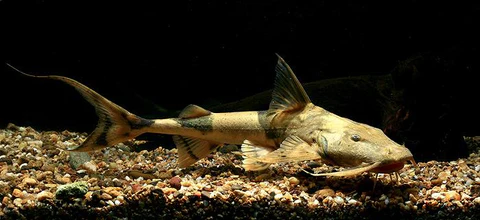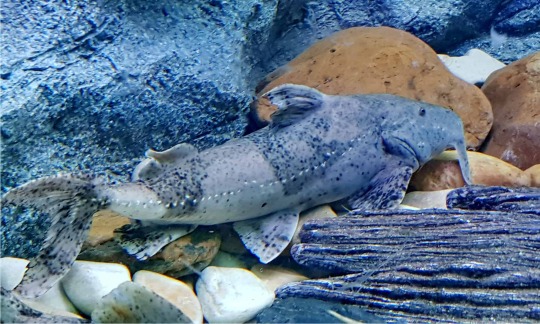#Indian Predator
Explore tagged Tumblr posts
Text
What accent coach is working magic behind the scenes of iwtv. A british man plays an american man with a thick new orleans accent that slowly fades to a standard american accent. Another british man plays an indian man with a french accent that morphs into a british accent. An australian man plays a french man with the strongest most unintelligible french accent youve ever heard
#iwtv#is this readable#interview with the vampire#yall ever think about louis slowly losing his accent while claudia kept hers. i do.#BTW when i call armand indian ik its an oversimplification since he predates india as a country but yk what i mean
12K notes
·
View notes
Text
Horror Movies to Watch on Halloween/Samhain/All Soul's Night
Free & legal streaming links to a few of the Letterboxd top-rated Indian horror movies
Bramayugam (The Age of Madness) - Thevan, a folk singer of the Paanan caste, has a fateful encounter when escaping slavery, leading to discover an ancient tradition altering his destiny.
Bulbbul - A child bride grows into an enigmatic woman ruling over her household and hiding her painful past, as supernatural murders of men plague her village.
Manichitrathazhu - A young couple, Ganga and Nakulan, arrive at Madampalli, Nakulan's ancestral home. Hailing from a family that follows tradition and superstitions, Nakulan’s uncle Thampi objects to the couple’s idea of moving into the allegedly haunted mansion, which Nakulan ignores. The couple moves in anyway following which seemingly supernatural events begin to happen.
Stree - Based on the urban legend of Nale Ba that went viral in Karnataka in the 1990s, a town is held in the grip of terror by tales of a mysterious woman who calls men by their name and then abducts them, leaving only their clothes behind.
Bhool Bhulaiyaa - When U.S.-based Siddharth visits his Indian home town with his new wife, he insists they stay at his ancestral home, laughing off family members' warnings of ghostly goings-on in the mansion.
Pizza - Michael, a pizza delivery boy, lives with Anu, an aspiring horror fiction writer. One day, on a delivery run, he goes to a bungalow and mysterious events begin to unfold.
Shaitaan - Kabir and his family’s fun weekend retreat takes terrifying turn when an intruder takes over the control of the body of his teenage daughter, putting her at the mercy of his increasingly sinister orders.
Bhediya - Inspired by legendary folklore rooted in Arunachal Pradesh, Bhediya tells the story of Bhaskar, a man who gets bitten by a mythical wolf and begins to transform into the creature himself. As Bhaskar and his ragtag buddies try to find answers, he is worried that the monster in him will wipe out human existence in the local town.
Bhooter Bhabishyat - A young director listens to a hilariously scary story narrated by a stranger, where a group of ghosts try to save the only place they can haunt in peace.
Romancham - A game of Ouija board goes hilariously wrong when seven bachelors unexpectedly invite a spirit and try to make the best out of the situation.
Tumbbad - In 1918 on the outskirts of Tumbbad, a cursed village where it always rains, Vinayak, along with his mother and his brother, care of a mysterious old woman who keeps the secret of an ancestral treasure that Vinayak gets obsessed with.
Please reblog so more people can find movies to watch tonight!
#free#horror movies#letterboxd#halloween#horror#werewolves#free movies#samhain#scary movies#thriller#humor#funny#possession#home invasion#predation#historical#folklore#mystery#hauntings#haunted house#haunted mansion#pizza#terror#scary#free movie link#free movie links#movies#indian movies#free movie#einthusan
15 notes
·
View notes
Text
Shield-tail Snake Hunting Earthworm.
This was the third time that I witnessed a Shield-tail Snake Hunting Earthworm.
First time I saw it at Kaas, Second time I saw it in the outskirts of Satara city, and this is the Third time that I saw this at Raireshwar.
I have come across Shield-tail Snakes several times, but the species may have been different ones. Me after watching shield-tail snake hunting earthworm so many times, it appears, that the earthworm is their common prey, and this must be a common scene.
During this third encounter, while the snake in the video can be seen hunting earthworm, the snake later abandoned its hunt. The snake was observed leaving the earthworm and the scene. But, after snake vanished in nearby grass, and when I left the site, it remains unknown whether snake again pursued the same earthworm it had attacked.
Also, the earthworm appeared to have a tear on its body at one end. Whether the fight with snake somehow must have caused it, or it was caused by some other reason couldn’t be understood. This was happening on a trail, through which tourists were regularly passing.
- Dhairyasheel Dayal
#shieldtail#shield tail snake#snakes#snake#reptiles#reptile#predator and prey#animal behaviour#ecology#snake feeding#wildlife#indian wildlife#snakes of western ghats#reptiles of western ghats#maharashtra#india#uropeltidae#shieldtail snake hunting earthworm#snake hunting earthworm#hunt
8 notes
·
View notes
Text
I know it’s fanfic and doesn’t matter but I would love to know the alt history/explanations for the Desi Harry Potter headcanons
#I actually think Lily being Desi is plausible#There is potential in head cannoning the Evans family as extremely assimilationist 2nd/3rd generation Desis#Like Malayali St Thomas Christians who convert to Anglicanism bc they are So Committed to being Just Like White Ppl#That would explain the names to some degree#And would also give some more context to Petunia being so aggressively Normal - it’s partially how she was raised#partially in response to Lily bucking all of that#Lily as a Desi and a muggleborn could add interesting dimensions to the way she’s treated/talked about#There are big model minority vibes from how a lot of ppl talk about her esp Slughorn#Anyway for reasons that I believe are part that old ‘potter sounds like an Indian surname’ post#Usually it’s James who’s the Desi parent#Which brings up soooo many questions re colonialism#not that there aren’t POC purebloods but we specifically know the Potters are part of the sacred 28#So they have to have been around for a while and def predate the end of the British raj if not it’s beginning#Anyway if you’ve read the whole thing ty lol
7 notes
·
View notes
Text










#india#modi#predator drones#Indian drones#partnership from hell#blood money#military industrial complex#apartheid#save palestine#ethnic cleansing#israel is an apartheid state#seek truth#free palestine 🇵🇸#genocide#illegal occupation#israel is committing genocide#israeli war crimes#ask questions#raise awareness#india and israel#indian military#why now?#hermes 900#hermes drones#adani elbit
11 notes
·
View notes
Text
do NOT, under any circumstances, watch mindhunter before bed. if the criminals and their motives doesn't traumatize you the soundtrack and background music will surely do
#it'll fuck you up#and your dreams#yk some of friends wondered why don't i follow indian criminals#well its one thing to see a series about crimes committed in 1970s america#and whole another thing to see how crimals and predator from MY OWN CITY or country hunted their victims from not even a decade ago natasha#house of secrets and house of horrors are the only ones i followed and it haunted me for WEEKS#and they're crimes committed with the family#there's no way in the hell am i going to watch indian predator#and yes i didn't grew up watching crime patrol#mindhunter#netflix#txt#series#desiblr#being desi#desi tag#desi#desi tumblr#desi things
7 notes
·
View notes
Text
Animal save life #shorts #shortvideo #trendin@Wildlife521
#animals#marine life#endangered species#rare animals#animal kingdom#African wildlife#Amazon rainforest animals#Indian wildlife#Australian wildlife#Arctic animals#jungle wildlife#savanna animals#national park wildlife#wildlife in [specific country/region]#forest animals#wildlife rescue#animal attacks#predator vs prey#animal hunting#animal migration#animal parenting#wildlife survival#animal fights#animal friendships#w
1 note
·
View note
Text

The Science Manuscripts of S. Sunkavally, p 746.
#eye size of nocturnal predators#vitamin A#diclofenac#Indian vulture#bone healing#electric current#manuscript#cursive handwriting
0 notes
Text
youtube
Gharial: Nature's Fish-Eating Specialist
Discover the fascinating world of the Gharial, a unique crocodilian adapted for a life in water! Learn about its diet, behavior, and habitat.
Check out my other videos here: Animal Kingdom Animal Facts Animal Education
#Helpful Tips#Wild Wow Facts#Gharial#Crocodile species#Fish-eating crocodile#Endangered species#Indian wildlife#Wildlife conservation#River habitat#Ganges River#Reptile documentary#Nature documentary#Animal facts#Rare animals#Aquatic predators#Wildlife photography#Crocodile behavior#Gharial hunting#Gharial conservation#National parks India#Reptile species#Freshwater reptiles#Animal kingdom#Wildlife enthusiasts#Nature lovers#Indian rivers#Reptile protection#youtube#animal behavior#fun animal facts
1 note
·
View note
Text
youtube
Shield-tail Snake Hunting Earthworm.
This was the third time that I witnessed a Shield-tail Snake Hunting Earthworm.
First time I saw it at Kaas, Second time I saw it in the outskirts of Satara city, and this is the Third time that I saw this at Raireshwar.
I have come across Shield-tail Snakes several times, but the species may have been different ones. Me after watching shield-tail snake hunting earthworm so many times, it appears, that the earthworm is their common prey, and this must be a common scene.
During this third encounter, while the snake in the video can be seen hunting earthworm, the snake later abandoned its hunt. The snake was observed leaving the earthworm and the scene. But, after snake vanished in nearby grass, and when I left the site, it remains unknown whether snake again pursued the same earthworm it had attacked.
Also, the earthworm appeared to have a tear on its body at one end. Whether the fight with snake somehow must have caused it, or it was caused by some other reason couldn’t be understood. This was happening on a trail, through which tourists were regularly passing.
- Dhairyasheel Dayal
#shield tail snake#shieldtail#shieldtail snake hunting earthworm#snakes#snake feeding#snake#snakes of western ghats#snakes of tumblr#reptiles of western ghats#reptiles of tumblr#reptiles#reptile#biodiversity of western ghats#sahyadri#maharashtra#indian wildlife#india#ecology#animal behaviour#predator and prey#snake hunting earthworm#Youtube
0 notes
Text
What are your thoughts on India's Predator drone acquisition? Share your views in the comments below!
[Featured image Courtesy General Atomics Aeronautical] [Missile Threat CSIS Missile Defense Project] [Lockheed Martin Wikimedia] The Indian defense landscape is abuzz with the recent acquisition of 31 MQ-9B Predator drones from the United States. This landmark deal marks a significant leap forward in India’s drone capabilities, promising to bolster its surveillance, reconnaissance, and…
#Counterterrorism#Drone Warfare#DroneWarfare#Hellfire Missiles#HellfireMissiles#India-US Defense Cooperation#Indian Defense#IndianDefense#IndiaUSDefenseCooperation#Maritime Surveillance#MaritimeSurveillance#MQ-9B Reaper#MQ9BReaper#national security#NationalSecurity#Predator Drones India#PredatorDronesIndia#Sea Guardian#SeaGuardian#Sky Guardian#SkyGuardian
0 notes
Text
India Poised to Strengthen Defense as CCS Prepares to Approve Predator Drone Deal
The Indian Armed Forces are on the verge of a significant boost as the Cabinet Committee on Security (CCS) is expected to approve the purchase of 31 MQ-9B Predator drones today. The $3.1 billion deal, facilitated through a government-to-government arrangement with the U.S. defense contractor General Atomics, will be a key addition to India's defense capabilities, with no third-party involvement.

These drones, equipped with Hellfire missiles, GBU-39B precision-guided bombs, and rotary cannons, will be a game-changer, especially for the Indian Navy, which has spearheaded the acquisition. Out of the 31 drones, 16 will be allocated to the Navy, and the remaining split between the Indian Army and Air Force—each receiving eight.
While a portion of the drones will be assembled locally with 30% of components sourced from Indian industries, the integration of DRDO-developed missiles has been ruled out due to high costs and the complexity involved.
The Predator drones' high endurance, altitude, and advanced weaponry will give India a strategic edge in the region. For the Indian Navy, the drones will enhance maritime surveillance, extending from the Gulf of Aden to the Sunda Straits, and serve in anti-drug and anti-arms trafficking operations. They are also expected to deter Chinese spy ships frequently seen in the Indian Ocean. Meanwhile, the Army and Air Force will utilize the drones for high-value targets and critical infrastructure in extreme scenarios.
This acquisition marks a crucial step for India, especially as DRDO's indigenous drone project faces delays, and China continues to advance its own drone capabilities while supplying them to Pakistan.
1 note
·
View note
Text
India Poised to Strengthen Defense as CCS Prepares to Approve Predator Drone Deal
The Indian Armed Forces are on the verge of a significant boost as the Cabinet Committee on Security (CCS) is expected to approve the purchase of 31 MQ-9B Predator drones today. The $3.1 billion deal, facilitated through a government-to-government arrangement with the U.S. defense contractor General Atomics, will be a key addition to India's defense capabilities, with no third-party involvement.

These drones, equipped with Hellfire missiles, GBU-39B precision-guided bombs, and rotary cannons, will be a game-changer, especially for the Indian Navy, which has spearheaded the acquisition. Out of the 31 drones, 16 will be allocated to the Navy, and the remaining split between the Indian Army and Air Force—each receiving eight.
While a portion of the drones will be assembled locally with 30% of components sourced from Indian industries, the integration of DRDO-developed missiles has been ruled out due to high costs and the complexity involved.
The Predator drones' high endurance, altitude, and advanced weaponry will give India a strategic edge in the region. For the Indian Navy, the drones will enhance maritime surveillance, extending from the Gulf of Aden to the Sunda Straits, and serve in anti-drug and anti-arms trafficking operations. They are also expected to deter Chinese spy ships frequently seen in the Indian Ocean. Meanwhile, the Army and Air Force will utilize the drones for high-value targets and critical infrastructure in extreme scenarios.
This acquisition marks a crucial step for India, especially as DRDO's indigenous drone project faces delays, and China continues to advance its own drone capabilities while supplying them to Pakistan.
0 notes
Text
Frat Founding

Wanting a simple group on campus for Indian students on campus, Kiran goes to Chad who has other plans for the academic and university at large. In short order Kiran becomes the first link in that chain and soon neither he nor his friends will be able to resist the allure of horny, dumb Greek Life
The corruption of Kiran into a Desi frat bro he would hate to be! Found too many refs so I tossed on some briefer TFs of his friends at the end. Hope you enjoy! -Occam

He was treating it like meeting an advisor, or a professor. Countless times over the last few years Kiran had gone out of his way to ask for advice on personal projects or visited office hours just to gain further insights. The CS Honors student was always looking for ways to get ahead academically.
Never has one of these meetings involved a person quite like Chad Becker however. The President of the University’s Greek Council was only known to Kiran by reputation. Kiran’s never been much of a people person, part of this whole proposal to the frat president. He wants to make a space for other Indian and South East Asians on campus to have something of a Spirit Org on campus, and given the funding provided by the council to fledgling orgs, he figured it was at least worth a shot.
Worst Chad can say was no, right?

Kiran feels the weight of Chad's stare as he awaits an answer after his opening spiel. There are a few beats before the president speaks up, giving Kiran more than enough time to go over a good number of scenarios where he’s promptly laughed out of the room. Instead though, the intimidating ideal of a frat bro smiles and responds.
Despite the performatively laid back tone, it’s clear that there are cold calculations behind the man’s words, “For sure lil bro. Trust, there’s no one who wants to see Greek Life be more, hm, multicultural yeah? I absolutely hear you.” Listening intently, Kiran struggles to find any sincerity in the Cali bro’s tone as he waits for the ‘but’ that must be incoming.
It doesn’t. Still staring at him with eyes as sharp as a shark’s despite their icy blue irises, Chad continues, “I’m sure you know frat life gets a bad rap regarding biases and having a group like yours on campus would help everyone see that there’s a place for them in Greek Life. So Kiran, bro, correct me if I’m wrong, but you’d be president of the frat starting out yeah?”
Chad is clearly sizing him up as he says this, like a prize steer to go to show or a weed to be pulled so something superior may be planted. Kiran doesn’t notice as he bristles at realizing there’s been a misunderstanding, “Oh! Sorry Mr. Becker, I think- I, sorry- I wasn’t really thinking about a frat so much as uhm? In my mind I was imagining something more along the lines of a support organization for-”
He’s cut off without a word as Chad sucks on his teeth. Kiran swears he feels the temperature drop in the room, nerves. It’s just nerves. Forcing himself with all he’s got to look at the man sitting opposite him, somehow above him, Kiran almost shivers as he sees him only stare more intently, almost glaring. His perfect wide smile only gleams brighter as he continues to look into and through the meeker student like a predator.
For a moment his surfer-vocal fry fades away, “I see I see, so you want to use our funds for your little hackathons and holi formals but keep us at arms length yeah?” His eyes narrow and his lips twitch slightly, but then he takes a deep breath and resets. That cold tone moving like the ebb of the tide as he reminds Kiran who holds the power here, “Let’s start over. Would you like a drink Kiran?”
Seeing Chad wander over to a minifridge hiding in the corner and grab a beer, Kiran prepares to turn the offer down. But then the president stands over him, one meaty hand on his shoulder while the other offers him an opened bottle dripping with condensation, “Please, Kiran. I insist.”
Before he even has an inclination to respond, the bottle already rests in his shaky hand. Only then does he notice the creeping thirst. Suddenly, his mouth and throat are so dry he wonders if he’d even be able to even speak.
Chad’s smile is too emotionless to be read as cruel and calculating, though there’s sure to be no affection in his words as he seeks to compel Kiran, “Go on, Prez to be, take a sip.”
He’s never been much of a drinker, let alone a beer guy. But as he’s commanded, like a dutiful soldier he has no choice but to obey. As soon as the first sip graces his tongue, the bookish student’s senses are dulled.
In the back of his mind he hears the echo of a memory he doesn’t remember living. Voices shout, ‘Chug, chug, chug!’ Kiran’s eyes go blank as he can’t help but obey. Each heaving gulp is deeper and more labored than the one that comes before. Kiran’s vision swims slightly as he watches Chad’s unreadable expression tinge with contentment.
Patting his guest on the back and laughing, Chad makes his way over to grab a couple more beers, “Hah! Easy now bro, this is a meeting now after all! Didn’t think you were that much of a party animal Kiran.” Popping open two more bottles, he sets one in front of Kiran and watches as the smaller man slowly shakes his head.
He isn’t a party animal, he detests crowds and drunken fraternity bros. Opening his mouth to deny Chad’s asinine assessment, his stomach grumbles. One of his hands goes to put pressure on it and physically feels it rumble. Still woozy from one drink, the lightweight suddenly begins to feel bloated.
Mouth still agog, his hand quickly flies to his face as he struggles to stop himself from burping. Clamping his lips shut just in time, each second pushing down the urge, each second refusing to let loose, it only grows more intense. He feels pressure rising in his stomach as his jaw burns from the effort of staying decent.
Beyond simple pressure, Kiran realizes that it’s not just internal, he feels his thin stomach pushing into his hand. In between clutching fingers begins to grow a layer of fat he simply would never eat enough to maintain. This distracts him enough for everything to give. Eyes watering, Kiran turns to look at the Frat president, as soon as he sees the smug look on Chad’s once guarded face, he loses control.
Buurrp- It lasts more than a few seconds. The soothing relief of giving in is firmly repressed by the embarrassment that fills his chest. Deep enough that Kiran can scarcely notice though, some part of him thinks it’s funny. Nothing wrong with burping bro, chill out- And while the thought is buried for now, it only continues to grow.
“Nice one brah!” Chad reaches out his drink to cheers with the new beer bottle in front of Kiran, lacking willpower to do anything but obey, so he does. Cold bottle in his hand once more he can’t ignore how right it feels in his hand. Clink- Seeing Chad take a swig he once more mimics his, er the president.


Still bloated, Kiran notices another strange sensation begin to rise. Just below where he clutched his stomach earlier, an itch begins to rise. With a frown, his free hand goes to do what one does and scratch it, clumsily continuing to drink his free beer as he does so.
Each pass of his fingers only makes it worse, spreads the burning itch further. Figuring he’s already embarrassed himself enough in front of Chad, he shoves his hand under his shirt. Gasping in shock, he realizes that his lower stomach is covered in a treasure trail growing wider by the second.
Feeling the strands pushing out into his sweaty fingers he can’t help but steal a look. Waiting for Chad to inspect papers in front of him Kiran quickly yanks up his shirt and bites his tongue to prevent from gasping again as he sees, on top of clearly having more weight, that his stomach that has always been gratefully hairless has been overrun with body hair.


Too dense and thick to even be dubbed a treasure trail, Kiran struggles to remember how he let it get this bad. Eyes drifting lower, Kiran finds another new problem. Slightly peeking out above his waistband and creating a definite bulge above his cock, his pubes have grown even more rampant than his belly hair. Seeing this and taking another swig of his beer, Kiran burps once more before doing the unimaginable.
He shoves his hands in his pants and scratches at his pubes. Almost moaning from delight he bites his lip as his fingers are immediately tangled in the thick new jungle. Creaking under his squirming form, reminding him that he has somehow put on more than a few pounds, Kiran absolutely forgets where he is as his hand drifts lower to cup his balls. His less-than-graceful fingers find them unmistakably heavier than they’ve ever been, almost filling his small hand.
Never truly distracted, at this point Chad sees fit it’s time to break Kiran from his reverie, lest he go too far too fast. Clearing his throat he calls Kiran back to his right mind, more or less. The slightly heftier student’s hand tears from his pants and forcefully bumps into the underside of Chad’s desk, producing a deep grunt of pain.
Now realizing that he was cupping his balls during the most important meeting of the semester, Kiran tries to hide that from the man who sees right through him. Though, without him being aware of it the very same hand races to his nose wherein he takes a deep sniff of the ball sweat soaked fingers. Watching his eyes roll back from the odor, Chad has to stop from bursting out laughing.
Going on something of a victory lap, Chad sees fit to taunt the changing man, “Yo bro, you just adjust your dick didja?” Hand still under his nose, Kiran stammers quickly denying the idea, there’s no way he did that? He’d not do so in private, how could he? And yet, even as he forces his hand back to his papers, the whiff of his sweaty dick remains, “No! Of course not- I mean-”
Smirking, Chad interrupts, “No, no, don’t worry ‘bout it bro. Guys like us don’t gotta worry about stuff like that. You get an itch, it’s the most human thing in the world to scratch it.” Kiran slowly shakes his head, guys like us. He’s not like Chad, he’ll never be like Chad
Seeing the man meagrely fighting back Chad stuffs his hand down his pants and performatively scratches an itch that wasn’t even there, dropping a stray pube on the table. The whole time, Kiran’s eyes never left the man’s hands, staring at the bulge in his pants shifting to the single curly strand that now sits between them. Ready to move on and content that the man’s changes are accelerating, Chad directs his attention back to himself.
“Got something on your cheek there bruh?” There’s the sound of Kiran sucking spit back into his mouth, not even aware that he had apparently been drooling. Quickly taking another swig, emptying his second beer, Kiran’s free hand flies to his face. Still slightly sticky from sweat, his fingers find something so shocking that he almost spits up the amber beer still in his mouth.
Swallowing the beer and tossing the bottle onto the table he scratches at his face fervently, beyond shocked that without his notice his paltry stubble has exploded to cover his face. No it’s not even stubble, as his suddenly less than pristine fingernails trail across his once hairless cheeks, peach fuzz thickens and spreads further across his face.
In no time at all a mustache pushes out of his upper lip and his jawline is coated with a thick beard. His mind tries to tell him this is normal, he’s got a hairy stomach and bushy pubes, surely he’s had this beard forever. Feeling bloated once more, his shirt begins to strain his chest as two meaty pecs begin to rise above his meatier stomach.


Focus returns to his eyes, he knows something is horribly wrong. Thicker brows furrowing at Chad he grunts out, finding his voice crackling deeper and slightly tinged with the vocal fry that infects every word out of Chad’s mouth, “What are you grh- doing to me you- urgh Asshole!” The president feigns concern and tilts his head ignoring the question that may well be Kiran’s last show of strength. Chad then simply pushes his half drunk beer closer to Kiran.
Eyes flickering between the man returning to the minifridge and the stale bottle set before him like bait, Kiran’s willpower begins to wane once more. Before the frat bro even makes it across the room, the sound of Kiran’s shirt straining against his heavier arms as he reaches for the drink fills the air. Chad grabs three more and returns to the desk.
When the mousy student entered the room Chad wondered if he’d even be able to sustain the transformation. Sitting here now, watching him drink that backwash laden swill without question, seeing nipples poking through the shirt beginning to tear, it’s clear that no dweeb out there will be able to resist his siren call. Kiran burps loudly, stopping just short of guffawing he tugs at his increasingly uncomfortable shirt.
Time to finish the dance, “So, Kiran, you were saying you wanted an Indian frat on campus right?” The top button bursts off his button up as he dumbly produces a plodding, “uuuuhhh?” His mind alights with his shifting memories. The fluorescent lights from studying overnight in a library suddenly strobing, changing colors as bookshelves press inward and deep base begins to pump from speakers pushing out from behind tables now littered with red solo cups and spilled cans.
Automatically drinking from the new bottle sat in front of him, Kiran sloppily wipes the beer spilling onto his beard with his hairier arm. Struggling a bit as his muscular biceps now compete with his heavy pecs for space. His vision swims, rapidly switching between the blowout party and the meeting with Chad. Competing with blaring speakers and crowd uproar that only he can hear, Kiran shouts in his new bullish voice, “Well uhhh, bro kinda just wanted a place for guys like me to hang y’know? Place for all the lil Desi guys on campus yuh?”
“Shirt’s lookin a little tight there bruh, you sure you’re just a ‘lil guy’ anymore?” Turning to take in his thick form, Kiran certainly can’t disagree. Chest hair encroaching on his neck, thighs thicker than his waist used to be. The chair creaks once more, threatening to totally give way under the still growing man. Yeah he’s no twerp, him and his bros are always at the gym.

In fact, Kiran doesn’t remember the last time he was even in a lecture. Attending office hours is absolutely out of the questions, the only interactions he’s had with professors and T.A’s were arm wringing for class credit. Clear as day he remembers meeting with a dude he would’ve sworn he was close with for intro to python, but as he plays it through he remembers burping in the man’s face and throwing a sweaty, heavy arm around him.
God that nerd was so uncomfortable. His expression turns to a sneer as he sits in front of Chad, and the president knows his work is just about done. Kiran paws at his crotch as he recalls dominating that man, some weak academic who thought himself a superior. Biting his lip, his bulge makes itself more than clear in his tight dress pants as the fabric rapidly e into the same sweats he wears every day, stained as they may be.
When pre suddenly begins to leave a stain that makes it clear the Desi frat bro is free balling, Chad knows Kiran is far past the point of no return. “Bro, do you ever not think with your cock?” Tearing off whatever remains of his shirt and fondling his bulky pecs Kiran shrugs, “Dunno bro, you ever think about somethin’ other than my cock either?” There’s a charge in the air as the two men stare at each other with something dark in their expressions before both break out into uproarious laughter.
Then, addressing it like it’s something they had discussed a number of times, Kiran takes the floor, “So, big bro, council good if I start recruiting for my new chapter?” Chad raises his glass and takes a long swig, with a content sigh he acquiesces, “Course brobro, we know you more than got what it takes. Been wanting to diversify frat row’s portfolio for a while, you know that.”
Scratching his exposed stomach as he stands, his fingers treading dangerously close to inching under his waistband once more, Kiran nods without a thought, “Yuhhhh!” Finishing another drink he belches yet again and finally there is no shred of decency left to fight back “Burrrrp, Huhuh!” Tossing the bottle onto the ground apathetic whether it breaks or not, the newly dubbed frat president stretches.


Flexing to himself as he stands there, feeling the strength and weight of his new form, Kiran feels his blood rush to his thicker cock as he realizes what a specimen he is. Chad similarly imagines how easy it’ll be for him to finally take over the rest of the school. No one’ll be shit talking Greek life anymore once men like Kiran are bumbling across campus. No need for little brownnosing losers in lectures when everyone finally remembers what it’s all about.
Eager to get a move on, and sure that if Kiran stays any longer both will have to write off the day for obvious reasons, he prods the man, “You were saying you were gonna go play your old friends a visit right? Go get your first members?” Kiran nods, that darker look returning and temporarily displacing his lust for himself and Chad. Rolling his shoulders he imagines his study group, doesn’t even remember how he knows them or why.
Grabbing a beer for the road, he nods at Chad and heads out the door. The incongruence at those dweebs even knowing his name begins to prickle at his mind, he needs to fix it. His frat must grow and so must they. Losers have spent too long playing MtG and Dota 2, he’s gotta remind them what men should be. That drinking, fucking, and partying are more important than their shitty assignments.
Wandering around campus he flexes his bicep and delights in his heady musk. Soon every beta male around will be just like him, just as Chad planned. He can’t wait until Chad runs this school. Approaching his old apartment he hears a few shrill men arguing about some lines of code inside. Cracking his neck and pawing at the growing bulge in his sweats, he’s never been more excited for anything. Time for the first inductions into the school’s newest fraternity.
In no time at all, his four best friends are all converted into perfect specimens for Kiran’s frat. Forewarned by his musk creeping in as he stands at the door, as soon as he barges in all four are instantly overwhelmed by his muscular, masculine visage. Under his touch their thin forms bulge. On the couch, Amir’s body immediately thickens into one that never shies away from his keg stand. His nose twitches as a powerful mustache pushes out of his upper lip as he becomes Kiran’s right hand.



Boyfriends Dev and Mo follow shortly after, their suddenly sculpted muscles bulging larger as if they were in competition with each other. Mo’s back cracks as he finally stands taller than his boyfriend, his potable goatee thickening into a beard that would put a lumberjack to shame. Dev’s twinkish face reshapes into something more masculine and handsome despite remaining smooth. While Kiran continues his work, focusing on the other two, the boyfriend’s waste no time rushing to their suddenly messier room.
Finally, quite Ajit who had been doing his best to not give in breaks. Hands that had been gripping the edge of the table trying to avoid the gaze of the man who cannot be Kiran, white knuckles cramp and burst larger as forearms and biceps surge larger in quick succession. His racing anxious breaths allow his chest to rapidly expand. Pecs quickly tatter his shirt as criss crossing veins decorate arms thicker than his legs once were.
Under the table his legs push larger and his bulge demands his attention. Lips suddenly surrounded by a thick beard, biting his lip he quickly snaps a picture of himself before following in the path of his five best friends as his hands quickly find his newly massive cock. The air of their apartment swiftly smells more of sex than one can imagine. Each man a perfect test case for Chad’s grand plans, perfect frat bros whose dicks will lead their frat to expand. Kiran and Amir hosting parties that no Desi man could resist, no one’s eyes will be able to avoid Dev and Mo as they’re all over each other at the gym, and Ajit’s new online presence and perfect form will send tendrils of change well beyond their university. One unreached community handled, Chad continues his grand plan of ensuring that Greek Life is the only group left standing.
#male tf#mental change#muscle tf#hair growth#personality change#corruption#dumber#frat bro tf#jockification#reality change#musk tf
598 notes
·
View notes
Text

" Baobab, a prehistoric species which predates both mankind and splitting of continents over 200 million years ago. Baobabs (Adansonia) are distinctive trees with incredibly large trunks. They can store tremendous amounts of water, as their trunks noticeably swell during the rainy season. Tree is native to African savannah, where climate is extremely dry and arid, it is a symbol of life and positivity in a landscape where little else can thrive. African baobab (A. digitata) has a vast range throughout the arid parts of Africa; six additional species are native to the Indian Ocean island of Madagascar, off south-east Africa; and an eighth species is native to north-west Australia. The largest known living baobab is the Sagole Big Tree, a specimen of A. digitata located in Masisi, Vhembe, South Africa, near the border with Zimbabwe. Based on its most recent measurements, Sagole has an extremely large base that covers 60.6m², a height of 19.8m and a total wood and bark volume of 414m³. Its aboveground dry mass is estimated to be 54 tonnes. Baobab trees grow in 32 African countries. Tree known for its longevity and some specimens in Africa have been dated to between 1100-2500 years old and reach up to 30m high and up to an enormous 50m in circumference. Baobab trees can provide shelter, food and water for animals and humans, many savannah communities made their homes near Baobab trees. Baobab also looms among ancient mounds and remains scattered around them are invariably early medieval or Portuguese. " // © Dr. Mohammad Firoz Khan
#Africa#nature#landscape#Tree#Baobab#Savannah#Safari#Wilderness#photography#aesthetics#wanderlust#explore#follow#discover
602 notes
·
View notes
Text
Fish of the Day
Today's fish of the day is about the goonch by special request!

The gooch, also known as the giant devil catfish, is a fish that I've written about before, and those of whom have been on this email list may remember from back in February 2022. Known by the scientific name Bagarius yarrelli and synonym Bagarius bagarius (which may be another smaller species, and may simply be a misnamed juvenile goonch catfish), this fish is well known for their huge size. Found across the Indian subcontinent and Southern Asia, particularly the basins of Indus and Ganges. Living in particular in shallow beds, underwater caves, and submerged cliff faces, as these fish are known for frequenting areas of both shallows and of great depth. Most of the resources on this fish are based around the fishing legend of them. As such a large, fast, and violent fish, many anglers have created almost a mythology around them, based around tales of man eating fish, and of the skill required to find and catch them.

Very little is known about the goonch catfish, and most public perception of it comes from the American TV show Animal Planet segment called River Monsters, which searches to catch large and dangerous fish worldwide. An episode of this show covered the mythology of the Goonch, specifically after a series of people were pulled underwater the Kali River of India. It was found that a particularly large goonch (as long as 6ft 7inches, and weighing over 160 pounds) was the cause of the attacks, sightings supported this, and all local crocodiles were too small or not known to be in the area of attack, with no other large predators as far upriver. However, other than humans, on occasion of getting large enough to forcibly drown them, the diet of the goonch is entirely carnivorous. Goonch eat: invertebrates, crustaceans, amphibians, and fish. Although when larger they've also been recorded taking down much larger prey, such as water buffalo.

There is almost no knowledge about the reproduction of goonch catfish. All research I have done suggests there are no instances of captive breeding, and no observations of wild spawning. Most catfish spawn in the warmer months of summer, with female catfish releasing anywhere between 3,000 to several hundred thousand a season, with male fish releasing milt to fertilize these eggs. During these spawning seasons, catfish often meet in rocky crevasse at nests, where sometimes one parent will watch the eggs in species of monogamous fish. However, there is some more knowledge about the goonch catfish itself. Their wild lifespan is unknown, but in captivity Goonch Catfish live anywhere between 5 to 10 years, and display no sexual dimorphism between male and female goonch.

That's the goonch catfish, everybody! Have a wonderful day!
#Bagarius yarrelli#Bagarius bagarius#goonch#giant catfish#giant devil catfish#catfish#devil catfish#river monster#fish#fish of the day#fishblr#fishposting#aquatic biology#marine biology#freshwater#freshwater fish#animal facts#animal#animals#fishes#informative#education#aquatic#aquatic life#nature#river#India
641 notes
·
View notes